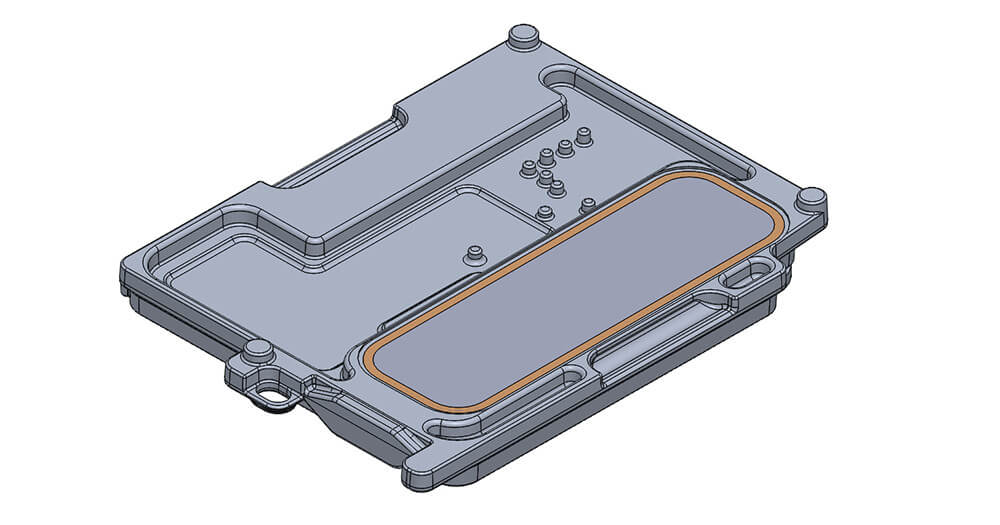Our client base is strongly focussing on product development activities, with a desire to introduce more effective products and solutions to meet market requirements. Further to this, from the viewpoint of the power electronics sector, there exists a requirement to produce greater power packs, from which waste heat is generated at increased levels. These new levels require more effective cooling solutions, which we have successfully innovated in close collaboration with our customers’ product development teams.
“When greater power is packed into more compact packs then waste heat levels increase, which results in much lower efficiency of traditional air cooling where waste heat is conducted to the aluminium casting and then into the air of the immediate environment. Large amounts of heat require liquid cooling with properties and effectiveness many times greater than air cooling. Better thermal management of packs, through liquid cooling, extends the lifecycle of enclosed electronics”, Eero Pellikka, Head of Foundry Business explains.
With significant volumes of heat, liquid cooling is the better option for achieving excellent heat transfer properties and significantly improved efficiency compared to air cooling. In liquid cooling, liquid channels remove the waste heat. During the pressure die casting phase the liquid channels are not fully casted. Then the addition of a cover using friction stir welding, completes the liquid cooling channels.
“Friction stir welding is the ideal method for meeting customer needs. It involves joining two separate items, such as a cover plate lid and a die-cast shell. Friction stir welding links together e.g. a plate and a die-cast shell securing channels. This method also allows us to weld different materials thus creating large and complex structures with complete closed liquid cooling circulation”, explains Eero Pellikka.
“Friction stir welding creates a sealed, high-quality metal to metal joint”, explains Hannu Kosonen, Development Engineer at Alteams.
Compared with traditional welding techniques, friction stir welding generates lower temperatures, which means that it creates less residual stress and allows the structures to better retain their correct shape.
At Alteams, we take pride in assisting our customers to improve and develop their commercial operations. Thanks to the innovative techniques we offer, our customers are free to re-think their own business processes and create new and exciting cooling solutions.
Find out more about one of our other innovations – the high thermal conductivity aluminium alloy

